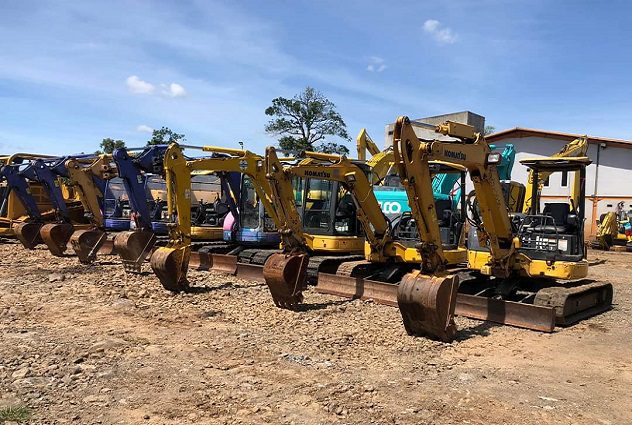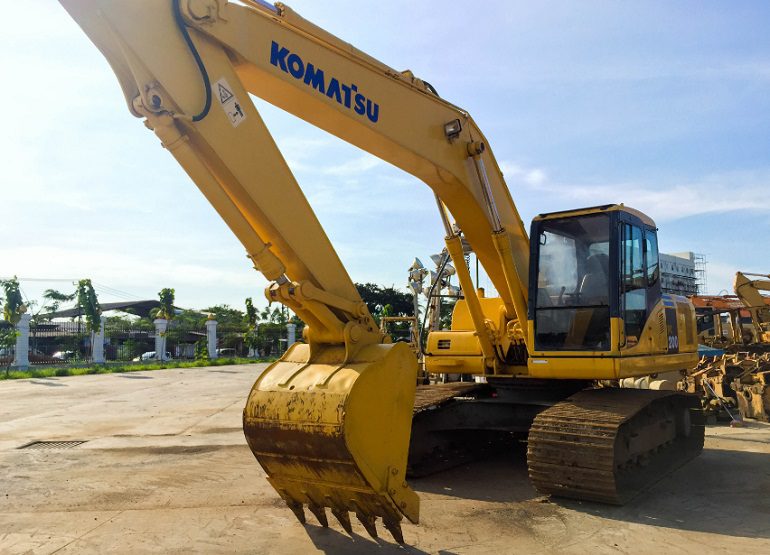Land compaction is one of the important stages in the construction project. This process is carried out Using the heavy weight of the soil stuffing or compactor, like vibro rollers, three wheel rollers, and others. Besides that, There are several factors of soil compaction that will affect the smoothness and results of the compaction.
Before starting the construction of a building or infrastructure, land should be compacted first. This compaction process plays an important role so that the soil becomes stable and strong to support the construction load. By compaction, Construction can stand firmly and prevent potential damage in the future.
So, Land compaction aims to create an ideal foundation in supporting building construction, road, and other infrastructure. Let's recognize what are the factors of soil compaction, compaction process, benefit, and practical tips for optimal results.
What is land compaction?
Land compaction is the process of reducing empty space on the ground by molding and compining material. This process will make the air in the ground reduced, thus producing higher soil density.
In construction projects, Land compaction is done after cleaning the land from the presence of trees, rocks, and bushes that interfere with the development process. If the land is clean, The soil is then flattened and compacted.
The soil compaction process is done by crushing or pressing the soil using heavy equipment compactor. With high density, Construction land will not be easily shifted or collapsed even if exposed to water or overflowed.
Soil compaction is different from other land processes such as consolidation. The soil compaction process takes place quickly when the soil has decreased volume due to dynamic loads. Compaction works by reducing the volume of air in the soil without changing the volume of water.
While consolidation is a process that lasts over a longer period of time, Often years. Consolidation occurs when the water in the pores of the soil slowly comes out due to static loads, until causing a drop of soil volume. Usually there should not be a building on it until the consolidation is complete.
Here are some of the benefits of land compaction for construction projects:
- Improve the ability of the soil to withstand the burden of the structure built on it.
- Increase soil stability to reduce the risk of decline (settlement) which is uneven.
- Land that is more stable and not easy to landslides is suitable for construction in hilly or slopes.
- Minimize water seeping power, thereby reducing the risk of erosion and drainage problems.
- By creating a solid foundation, life life or construction resistance can be longer.
- Produce a more sturdy subgrade and supports the foundation of the building, road, embankment, or dam.
Factors affecting soil compaction
There are several factors that influence the process of soil compaction. The smoothness and results of soil compaction are influenced by a number of things, like the type of land, water level, the pressure given, etc. This understanding is very important to minimize the risk of lack of soil and so that it can create maximum results.
Here are some of the soil compaction factors and the explanations you need to know:
1. The type and texture of the soil
One of the soil compaction factors that must be observed is the type and texture of the soil. Each land has a different character, like rough soil, bound, etc. Coarse -grained soil is usually easier to compacted than fine particles.
Land with gross details has a larger pore space that can be filled with smaller details to increase density. On the contrary, Fine -wrapped soil tends to withstand water which makes the compaction process more difficult. That's why water rate control should be noted in the compaction of the soil of the soil.
The properties of soil also affect the process of compaction, such as plasticity or cohesion. Land that has high cohesion, Like the land of the land, requires higher pressure to reach the same level of compaction as the rough soil. In this case, The selection of the exagatable equipment must be adjusted to the type of soil.
To ensure compaction can provide optimal results, usually needed some soil tests. The soil test process includes determining the physical and mechanical properties of the soil, like the maximum volume weight, the measure of the details, Up to the water rate in the material.
2. Water content in the ground
Water rates are also a factor in the soil compaction that needs to be taken into account. The water content in the soil has a crucial role in determining the level of compaction that can be achieved. Because water functions as a lubricant between soil particles that allow the soil to shift and adjust so that the density can be maximized.
When the water content is too high, then the soil will become too soft and tend to lack structural strength. On the contrary, If the water content is too low, Soil particles cannot shift well. As a result, the level of land compaction will be low.
The high-low water content in the soil is also associated with weather conditions and climate change. For example when it rains heavily, Water rates will increase. While when dry or hot conditions, then the water content can increase dramatically. Both of these conditions greatly affect the compaction process.
3. Pressure and load
The process of compaction of the soil also involves repeated and consistent pressure on the soil. The pressure is produced from heavy equipment that functions specifically for compacting, like roller (dumb). Giving pressure to the soil greatly affects the level of compaction.
The higher the load or pressure given, the higher the density of the soil produced. However, however, Each type of soil has its own optimal pressure limit. If the pressure applied beyond the bounds, then the soil structure can be damaged.
Therefore, Pressure control during the soil compaction process is very important. Besides that, Land compaction should also be done with the right time and the right way. In this case a deep understanding of the nature and characteristics of the soil, and technical skills to operate heavy equipment to compact the ground.
4. Frequency and duration of compaction
The compaction frequency is related to how often the heavy equipment or compactor machine is used in an area. The higher the compaction frequency, The better the results are because the soil becomes denser due to the repetition of pressure.
The duration of compaction time also greatly affects the results. Compaction made in a short duration may not produce optimal density. The suitable combination of frequency and duration will determine the success of compaction. For example for sandy land, The duration of short compaction with high pressure tends to be more effective.
5. Environmental factors
Environmental factors include climatic and weather conditions that can affect the water content in the soil. Water rate is one of the key factors in the compaction process, As has been discussed in the water content point in the ground. Besides that, Air temperature also affects water levels.
High humidity due to rain or low temperatures can increase ground water content. These conditions make the soil too soft and reduce the effectiveness of compaction. On the contrary, dry conditions can cause the soil to become hard and difficult to compact.
The process of compaction of the soil
The soil compaction process involves several stages that play a role in creating soil density and stability. Here's the process of land compaction you need to know:
- Initial preparation by cleaning the land from disturbing materials, like rocks, grass or bushes, debris, and others.
- Analysis or testing to determine the type of soil and its nature, Like water rates, grain size, and so on.
- Arrangement of soil humidity by adding water or drying it to achieve optimal water content.
- Overlapping the soil with a thin layer, depending on the type of soil and the compactor.
- The compaction process is carried out using heavy equipment such as roller, compactor, or Tamping hits.
- Density testing is carried out to ensure that the soil has reached the desired density.
- If the test results show density is not optimal, The compaction process is repeated by adjusting the tool, method, or the rate of water
Soil compaction techniques that are commonly applied, namely dynamic compaction. This method involves the high use of mechanical energy, Like wearing a vibrator device or dropping a heavy load. Dynamic compaction is very useful in runny soil to help reduce excess water content and increase density.
Considering that soil compaction must be done with maximum and measurable results, So make sure to use quality heavy equipment and prime. As a consideration, You can use heavy equipment from PT Perkasa Sarana Utama (PSU) which is guaranteed quality.
Read Also: Heavy tools for leveling the ground: Function, Type, and the way of work
General problems in soil compaction
Land compaction is a crucial stage in the construction project. This process is often faced with various problems that can hamper or become obstacles. One common problem faced is the soil condition that is too dry or too wet.
Soil that is too dry is difficult to compact because the particles cannot move properly. On the contrary, soil that is too wet can become soft and lose strength. Excess water in the soil can also cause the deposition and collapse of the structure after compaction.
To overcome this problem, It is important to test groundwater content before the compaction process begins. If the soil is too dry, additional water is needed to achieve optimal water content. When the ground is too wet, soil needs to be dried naturally or can also use a dryer.








